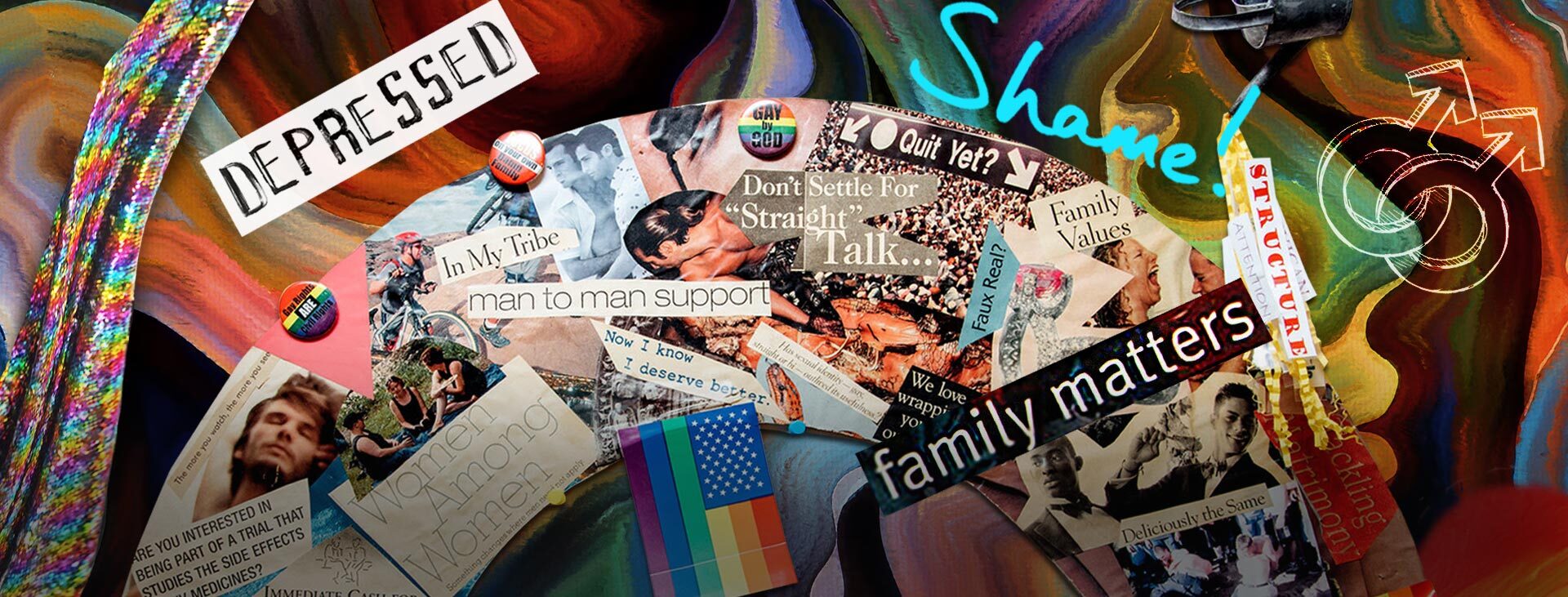

It’s no secret that youth mental health is in crisis across America. Over the past decade, depression rates among teenagers have risen by 60%,1 while suicide rates have increased by 56% among young adults aged 18-24.2 Additionally, anxiety disorders now affect approximately one in three adolescents.3 Our latest pitch had us put our heads together to try to figure out how to best confront, and positively impact, the enormity of this crisis. Today, in honor of Mental Health Awareness Month, we’d like to share the idea we pitched: the All of Me campaign.
We were starkly aware that the success of an initiative with kids and teenagers would hinge on whether we could engage their actual experiences rather than our perceptions and expectations of them. The campaign would need to connect with them on a deep, personal level. Too often, younger people are either talked down to, talked over, or told to be “empowered,” without a true understanding of the challenges they face. The campaign would need a way to listen to and center the actual experiences of young people. The solution we found was a co-design approach – an approach that would allow us to build the campaign with the participation of the audience it aims to reach.
A co-design approach is a collaborative method where the target audience participates in the design process. Co-design campaigns aim to create more relevant and impactful advertising by engaging and incorporating the voices and perspectives of the intended audience.4
Collaborating with experts in co-design, such as ThinkPlace, we ideated an immersive camp experience that would host people from diverse backgrounds for five nights. While there, activities would be specifically tailored to connect and bring out the youth experience around mental health. In this safe environment, guided by crucial professional support, they could share their perspectives, which could then be featured in the campaign. This would ensure the campaign’s authenticity and resonance with the kids themselves.
Next, we needed a concept. We wanted one that would emphasize the importance of self-determination and self-compassion in the journey toward well-being. With this goal in mind, All of Me was born.
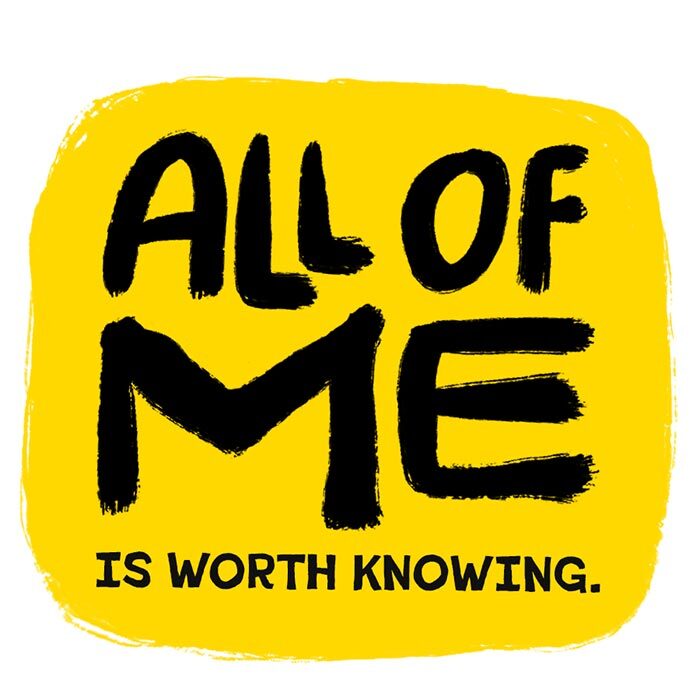
At the core of the All of Me campaign is the line, “All of me is worth knowing.” This judgment-free refrain invites the viewer on a personal journey of radical self-acceptance through self-discovery. It challenges them to identify all attributes, good and bad. By normalizing the fact that everyone possesses both brightness and darkness, we hoped to create an environment in which mental health conversations are not just tolerated, but encouraged.
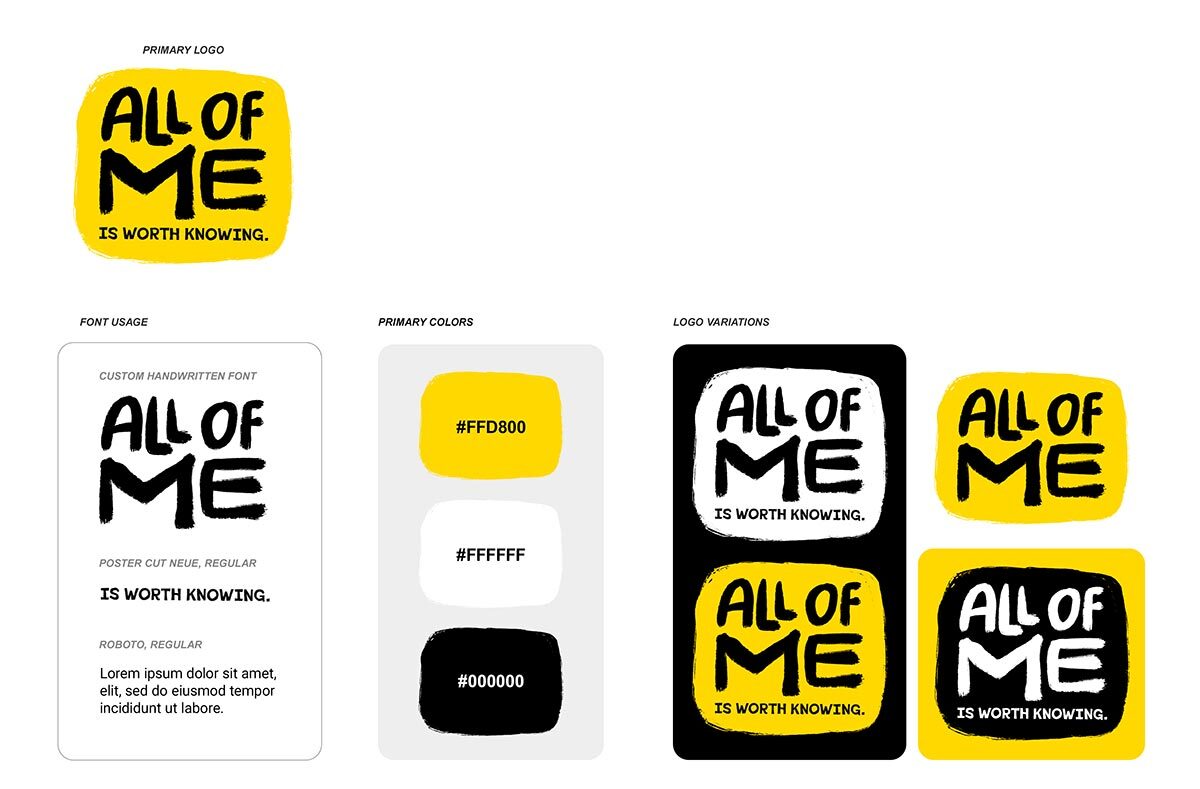
The All of Me line is paired with imperfect hand-drawn text and an abstract shape – a look that doesn’t shy away from flaws and roughness. The yellow-black color scheme reflects the inherent duality within each of us, emphasizing that darkness and brightness can coexist. It is also intentionally reminiscent of transit motifs – school buses, traffic signs, and taxi cabs – to represent the campaign’s idea that self-discovery is a both a metaphorical and literal journey.
The result was a campaign designed to meet kids where they are. The accompanying ad showcased powerful portraits of youth – who would have participated in the co-design camps – proudly holding oversized collages filled with all the things they see in themselves.

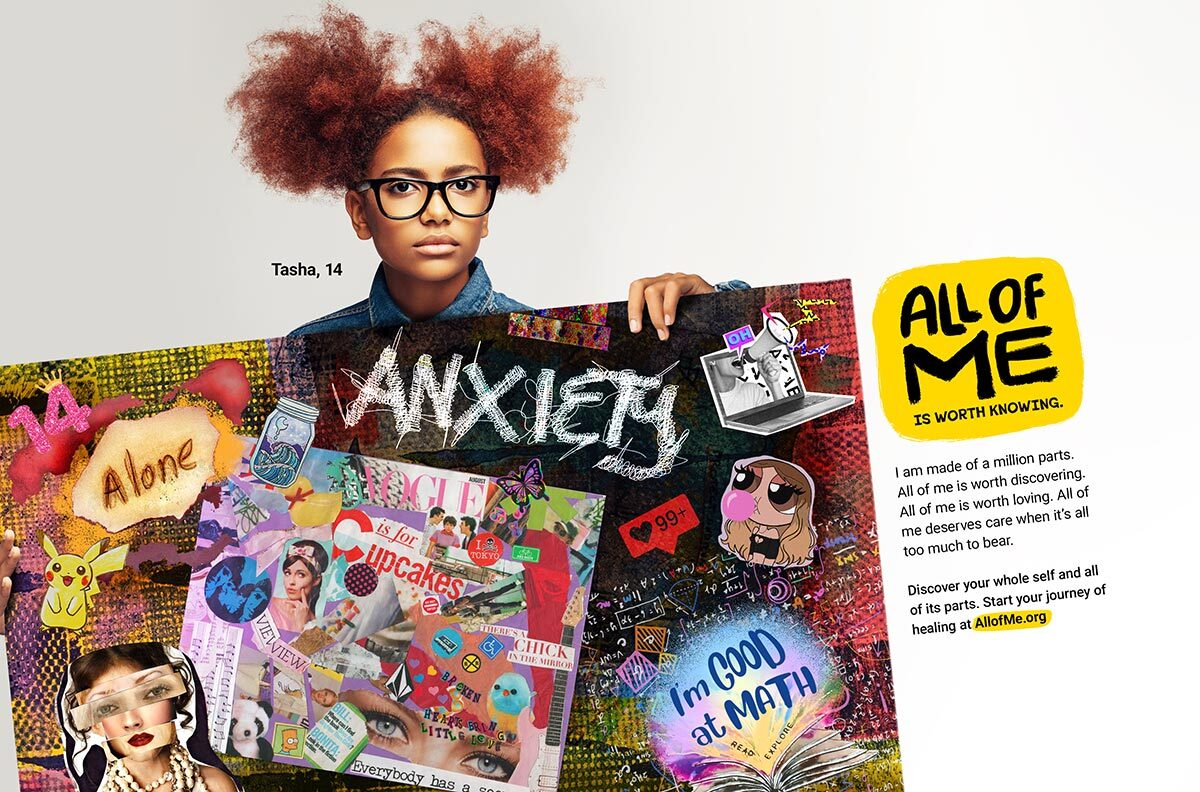
For those at home who didn’t attend the camps, we intended to create a website where kids could create their very own collage, just like the kids featured in the ads. We wanted the experience to be as interactive and engaging as possible for all kids, whatever their situation.
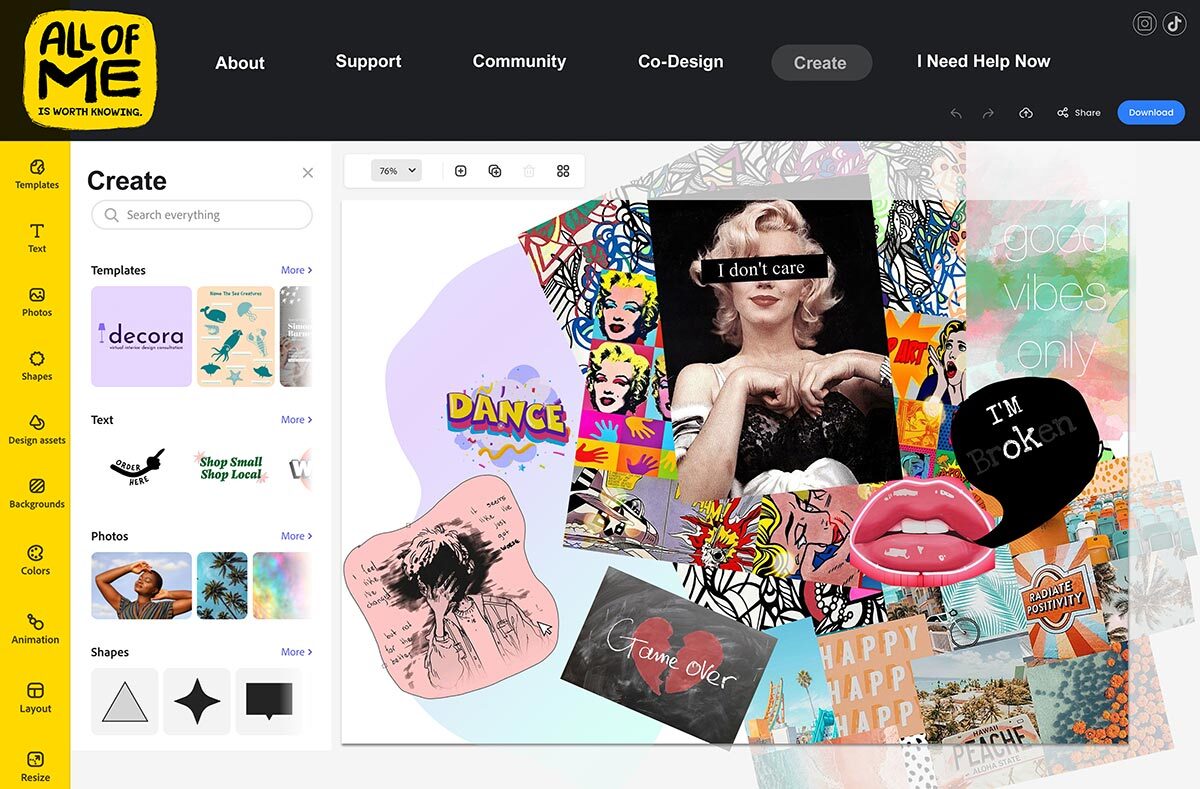
The ground-up design also ensured we avoided lecturing or using unrelatable slogans of empowerment to shy away from the murky, confused, and multi-faceted nature of self-discovery. Instead, All of Me embraced the complexities of mental health struggles and contrasted them with personal strengths. And, in the end, it emphasized that in the contrast often lay the salvation.

